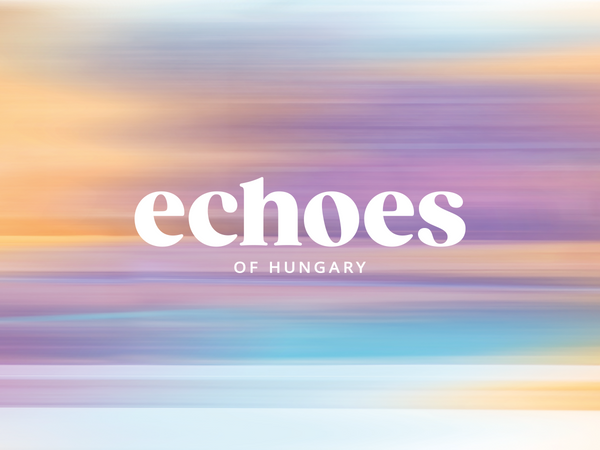Everything is becoming more digital these days, especially shopping. What are the challenges in this environment for one of the largest online retailers in the region? Can the extra revenue from the pandemic be fully seen as a blessing? We asked these questions from Balázs Várkonyi, CEO of eMAG, a pioneer in Central and Eastern European e-commerce.
In Western Europe, the e-commerce market is dominated by a few giant multinational corporations, while in Central and Eastern Europe, the biggest players vary from country to country. What is the region-specific explanation for this phenomenon?
This question can be explained by the fact that Western giants are not started there where they are now; they are constantly evolving, expanding, and gradually conquering new markets. They do this by considering the potential and size of the markets in question. For example, it is absolutely reasonable that when Amazon first entered Europe, it started to operate in the German, Italian, French, English, Spanish or Dutch markets, covering a large percentage of the continent’s population. Hungary is further east, the legal environment is not as regulated as in the West for historical reasons, and the market is relatively uncertain and riskier. This allowed the smaller markets’ local players to develop. Therefore, for example, eMAG in Romania, Alza in Czechia, or Extreme Digital in Hungary could grow and become the online market leader. In 2008, Western multinational corporations almost entered Central and Eastern Europe, but due to the crisis, they finally withdrew, focusing on the markets they had already conquered rather than on smaller, more challenging ones. There is nevertheless a risk that the MNCs will one day reach our markets, but the major Central and Eastern European companies have become adequately strong in recent years, backed in many cases by large investors, capital, and professional and financial injection. eMAG had also made a good judgment when it decided to team up with Extreme Digital, a local partner, instead of trying to manage everything entirely from abroad.
eMAG’s new logistics center in Dunaharaszti will serve not only the parent company but also six thousand partners. What guarantees that the smaller partners will not be exploited and that eMAG will not abuse its dominant position?
The logistic partnership is not mandatory; it is an optional service. If someone considers that eMAG can manage their warehousing and logistics processes on more favorable terms, they will choose us. If, on the other hand, they see that they can do it cheaper in another way, they will not use our services. Secondly, our marketplace model is partnership-based: it is also in our interest to have big and strong partners with a high turnover; this is the case when our model can work well. We would have no turnover if we exploited them, offered them conditions in which it would not be profitable for them to trade, or forced them to sell their products more expensive.

So, is the biggest advantage of a Central and Eastern European e-commerce company compared to a Western MNC related to its size?
I have always said, „let Amazon or eBay come to the region.” With their arrival, online sales and e-commerce would get a bigger slice of the overall trade pie in Hungary because when multinational giants invest in a country, their advertising can drive people towards online commerce. Today, this pie slice is 8-10% in Hungary, but there are countries where it is as high as 20-25%. Thus, there is still huge potential in e-commerce, and if a major player enters our markets tomorrow, it would not only take a significant share of the pie from the current players, but the sector as a whole would also grow.
The pie slice of online commerce from overall trade has grown impressively in recent years. The coronavirus pandemic played a significant role as, in many cases, people could not go to the traditional, physical shops; thus, they had to shop online. Is such growth sustainable after the pandemic, especially considering that we are now heading to a potential crisis?
This is a more complex issue than most people think. Overall, the apparent boom that the COVID-19 pandemic has caused in e-commerce is not necessarily positive. You may think it is odd to paint the period negatively when business was good and sales were up, but the uneven and less predictable growth actually disrupted the whole system. It has shattered the strategy we have been building for years. From the outside, it seemed that the e-commerce sector was expanding dynamically every year, growing at 10-12, sometimes even 20 percent annually. This is indeed very dynamic, especially in a stagnant or at least not so dynamic economic situation. The coronavirus came on top of this, shaking up the pace where everyone could plan their developments and investments and expect steady growth. The market grew by 40 percent instead of 15-20 percent in the first year of the pandemic. This put quite significant pressure on us, we only had such high growth numbers around Black Friday before, but then we were always prepared for the extra volume. All aspects of online commerce have been at their highest operational level, preferably without any deterioration in quality, which of course, was not entirely possible in such a dynamic period, as, for instance, we had a lack of capacity to ship the increased number of parcels, which was causing delays in orders. In such a plight, the focus is neither on new investment nor growth but on getting through the day and keeping customers satisfied. The result of this situation was that, although sales were up, customer satisfaction was not, and the employees were stretched to the limit in the non-stop peak season. Then came 2021, with the economic setback, and the boom we experienced was undoubtedly over. The offline shops were reopening, and people were finally free to go out. So, the pre-pandemic 15% growth rate was followed by a 40% increase, and then a sudden drop came. This slowdown is exacerbated by the fact that during the pandemic, we did not improve as much as we wanted; we could not achieve our targets or remedy our deficiencies. This can mean a net disadvantage. So, overall, instead of growing 15-20% over two years, the company grew 40% one year and almost nothing in the next. Therefore, the COVID-19 pandemic was not really beneficial to us; it instead meant a temporary shift. Moreover, an economic crisis is basically not bad for e-commerce: in 2008, for example, people were less willing to travel, but as they were not traveling, they were buying new TVs instead.

These days, we hear about the world getting increasingly divided into smaller blocs. The separated Russian social media or the isolated Chinese internet signify that new iron curtains are descending. Do you experience this at eMAG, and are you prepared for it?
In recent years, such strategic issues have evolved rapidly. We have been able to respond quickly to the plight caused by the ongoing Russo-Ukrainian war because we learned to adapt to these crises during the pandemic. What is more, in many cases, interestingly, the isolation of certain areas can have positive implications for us. Let us just consider the severe chip shortage that the pandemic caused: as the sanctions were imposed on Moscow, the products destined for Russia were diverted to the European and North American markets, refreshing the IT supply chains. We are not concerned about the new iron curtains because we have always planned our future within the EU markets, so on this side of the curtains. As for China, there is no sign yet of a slowdown in Chinese products’ exports; they are still stockpiling a lot of raw materials and seem to be preparing to continue serving Western markets.
Hungarian customers are relatively cautious about new technologies. How used are they to parcel collection services now?
Compared to 10% last year, 32% of all eMAG orders are now picked up from one of our Easybox parcel lockers. This growth is thanks to the fact that by this summer, we have two and a half times more parcel lockers in Hungary, approximately 550, than a year ago. The increased coverage means that we have served so far three times as many orders (roughly 60,000) through parcel lockers this summer than this time last year. We see that many of our customers who try the parcel lockers once often choose Easybox delivery again. Most people use our parcel lockers for picking up everyday items such as bulk detergents, dishwasher tablets, diapers, and, more recently, cooking oil. These large packets are cumbersome to carry, but as we sell them at a good price, it is the most convenient to take them home from a nearby parcel locker. Of course, many people also pick up compact-size electronic products from parcel lockers, for example, Bluetooth headphones, computer components, coffee machines, or children’s toys. We do our utmost to encourage our customers to try our Easybox delivery service: if one orders a product on the eMAG app to a parcel locker, the delivery is free, and this is, besides the Hungarians, also true in the case of our Romanian sales partners. All in all, I see much potential in parcel lockers, as with them we can cost-effectively provide very fast delivery.
Balázs Várkonyi founded Extreme Digital with Gyula Kelemen in 2001, at the age of 21, and the company quickly became Hungary’s leading e-commerce website. The Romanian eMAG acquired Extreme Digital in 2019, and since May 2022, the two brands have been fully merged. The company’s steady expansion is well-illustrated by its 117,000 square meter logistics center currently under construction in Dunaharaszti, which will serve Hungary and several other countries in the region as well.
Photo: Dániel Gaál | Hype&Hyper

Ceramics inspired by ancient artistic shapes | Hana Karim











